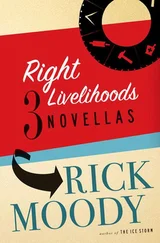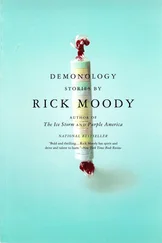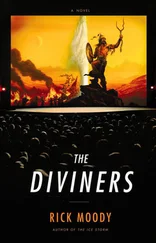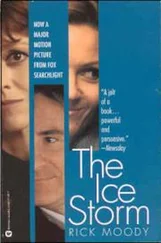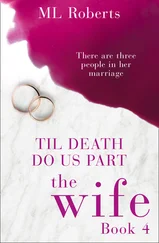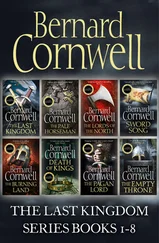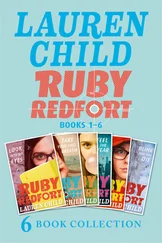Hey, kid,
The exam’s tomorrow,
And you have to pass.
Then from the middle place of consciousness, Tara awoke! At least her eyelashes fluttered. In the past, she had always taken a certain care with her eyelashes. There was always some capacious amount of eyeliner and mascara bound to run at the first sign of emotion. So it was appropriate that her eyelashes fluttered, and I reached over with my free hand and wiped away a little of the moisture that accumulated under the oxygen mask and cascaded down her neck. She mumbled something, and I asked her to repeat herself.
“Where we going?” she slurred.
“The foothills,” I said.
“Oh, nice,” she said. “Why?”
“Don’t you want to see the lights of the city?” I said.
“Always,” said she, summoning the word from a long silence.
And we went out Tanque Verde, that strange impulsive avenue that will not succumb to the grid, and I exceeded the posted limits, because if ever there was an emergency, this was an emergency, the emergency of aesthetics, because if a dying woman needed to see what was beautiful, one of the few things that man had brought to the desert that was indisputably beautiful, then we would exceed posted limits if we needed to, and there was no constabulary presence up here anyway, because they were all on the South Side, looking the other way while the gangbangers heisted another jet pack, and so there was nothing here, excepting a few rich people who were unwise enough to be out walking their dogs, now that the heat was beginning to give, and we passed these dog walkers at something approaching the supersonic, and it’s surprising that Tyrone’s car didn’t lift off, but it just wasn’t that kind of a car; yes, there was something eternal about being a middle-aged man driving his one true love up into the foothills, espousing the cause of beauty, until, just as the mountains were turning the color of fortified wine, we pulled into a dusty, neglected turnaround, facing in the direction from which we had come, and I said, “Here it is. Like so many other places, it looks great at a distance, huh?”
I could hear her breathing, or at least I thought I could hear her breathing. I could hear something breathing. A machine, perhaps. Or Tara and a machine, the one indistinguishable from the other. She didn’t say anything. There was the desert wind too. Have I described it? Because in autumn, after the monsoons have come through, the weather is changeable, and a big wind can come up, and there is that longing of autumn, when all things are charged with the waning of promise. Don’t let this be the last moment , I said to her, the last moment that we share .
She would not wake up.
And she never did say another thing to me, and if one wanted to read a lot into a person’s last words or in this case last word , the word always is a pretty good word. You can argue, if you want, that our love was not for the ages, since I was a not very good writer, and boorish in some ways, and Tara was a young woman who didn’t have a chance in the world, really, unless her chance was to die ahead of schedule, and much of our relationship we were mainly hooked up to various devices, or at least Tara was, but we were always something, we were always trying, always fucking up, always regretting, always laughing, always in debt, always looking for another place to live, always there, always elsewhere, always giving up, always complaining, always celebrating, always jumping for joy, always forgetting, always saying never again , and so always was a very fine word, if you wanted to leave on a memorable high note, and I will always remember that word always , more than I will remember, for example, taking her unconscious to the hospital and then watching a lot of heroic measures, the very involved dance steps that are the heroic measures. Tara died anyway, which is what she was going to do, and what she told me she was going to do, and I guess I always knew it.
Of the time after that, I don’t have anything much to say. I won the chess game, and I began writing these pages.
I’M INDEBTED to my friends and loved ones in the Southwest: Casa Libre en la Solana, in Tucson, and its director, Kristen Nelson; Melissa Pritchard; Lydia Millet; Aurelie Sheehan; Stacey Richter; Dan Coleman; Jim Weston; Susan Lang; Rodney Phillips; and especially Laura Van Etten.
I’m indebted to Yaddo, where I wrote the last sentence.
I’m also indebted to the following for believing in me and the project: Melanie Jackson; Deborah Rogers; Matthew Snyder; Pat Strachan; Michael Pietsch; Betsy Uhrig; Heather Fain; Heather Rizzo; Alison Granucci; Jennifer Alise Drew; Carl Newman; Susanna Sonnenberg; Regan Good; my wife, Amy Osborn; my daughter, Hazel Jane (who arrived just in time to believe that my job is entirely dependent on red pencils); my brother, Dwight Moody; my parents; my nieces and nephews.
RICK MOODY is the author of the novels Garden State, The Ice Storm, Purple America , and The Diviners; two collections of stories, The Ring of Brightest Angels Around Heaven and Demonology; a collection of novellas, Right Livelihoods; and a memoir, The Black Veil , winner of the PEN / Martha Albrand Award. Moody has also received the Addison Metcalf Award, the Paris Review ’s Aga Khan Prize, and a Guggenheim Fellowship. He lives with his family in Brooklyn, New York.
Astute fans of the genre in whose field I am plowing (people who are familiar with the just-released film The Four Fingers of Death ) will notice I have already taken liberties in one very basic way. I mean, if it is my responsibility to render exactly the film in question, I have failed. All of this backstory about the Mars shot, on which I have just expended a number of pages, does not actually appear in the film. I plead guilty on this point. But do I need to defend myself? I realized that I could not effectively write the second half of the story if I didn’t know a little more about the protagonist, M. thanatobacillus , the bacteria that causes all the damage. I couldn’t write about the bacteria unless I described those first afflicted with it. And writing about those poor, sick astronauts involved doing the unthinkable, really, moving the action onto the planet Mars, which is only hinted at in the actual film. Similarly, in the film The Four Fingers of Death the entire action takes place in the San Diego area. I felt I had no choice but to remove the story to a location I know more about — Rio Blanco itself. One ought to write about what one knows, correct? The desert of my part of the world, after all, is more like Mars, which always forces one to reflect back on when it might have had water, as it once apparently did. That’s what makes deserts so satisfying. They have a geological nostalgia about them. They are always struggling, always threatening the careless with their dramatics. That’s why I moved to the desert myself. So the Mars of The Four Fingers of Death is really just the contemporary American Southwest, the Southwest of 2025 or thereabouts, with its parboiled economy, its negative population growth, its environmental destruction, its deforestation, its smoldering political rage. Readers may ask how I felt so comfortable inventing characters out of whole cloth, when only one or two characters in this first section of my novelization actually appear in the film version of The Four Fingers of Death , and my answer to that is that they aren’t paying me enough to keep me from writing my own version of this story. Well, actually, they are paying me enough, because they have, in fact, asked me to cut the first section, but you will know, if you have this book in your hand, that I prevailed in this particular argument. I have nothing more to lose, and I’m not cowed by threats of a litigious nature, threats the fly-by-night publisher is so happy to invoke whenever there’s an argument between us. Never fear, readers. I actually think that the disputed nature of the manuscript offers you some interesting possibilities. You can actually buy two copies of the book, preserve one, and you can take the second one and just lop off the first half. The part you just read. And then you can read the second half as though that were the entire book. In fact, I divided it into two sections for this very reason. So if you have two copies of the old-fashioned softcover paperback, or if you have copies of the book on your digital reader, or perhaps on your wrist assistant, you can easily just erase the first half. Those who have somehow stumbled on this note before reading the first half of the book, well, all the better for you, because you are in a position to imagine what the second half would be like without this first half. In fact, the novelization as a whole might be improved in a digital reading type of environment, because then you could perform the interesting experiment of swapping the first half and the second half, so that first you know what happens with the bacterium on Earth, and then you could go backward and learn about the origin of the bacterium and the trip to Mars afterward. I’m trying not to give away too many plot points as I make these suggestions about the structure of the book, and I hope that is clear. Moreover, I suppose if you needed to buy three copies of the book, in order to have these three different versions (the one that is as shown here, the one without the first section, and the one in which the order of the first and second books is reversed), you could do that, and there is, I should point out, also a fourth possible structure for the book, namely the book in which only the sections about myself, Montese Crandall, appear. Because it has certainly occurred to me that there is a more conventional narrative here, namely the story of my life unencumbered by all this futurist stuff, and you could also just have that version of the book, in which there is only the apparatus, the textual apparatus. I suppose this would be the length of a short novel. This all suggests that you have, in fact, four books in one, all of them assembled by you, and none privileged by me, as the writer, nor by the movie tie-in publishing company, but really constructed or unconstructed and reassembled by you the reader. You are free to do this reassembly in any way that pleases you, and if this perfect freedom requires you to buy a couple of extra copies of the book, well, who is counting? You might be wondering how I came up with this idea to have a book that really is three and a half books in one. And the truth is that it came to me in a dream. I really was having trouble sleeping, as I often do, and I took some of those extra-strength sleep aids you can get now, the kind that you’re supposed to use on those long business trips to the East. Anyway, I slept about sixteen hours and missed a morning shift at the flea market, and then at some point in the middle of the afternoon, when I must have run the course of the medication and slipped into a more REM-oriented state, I fell into evaluating four different possible approaches to the The Four Fingers of Death , in my sleep, without being able to resolve them. Indeed, in my sleep, the resolution would be at my peril, or so the dream muses said. The promptings of the subconscious, I explained to my publishers, are such that one must heed them. And anyway, this innovative structure might result in a higher volume of sales, each of the four versions with its distinctively colored and designed cover.—M. C.


